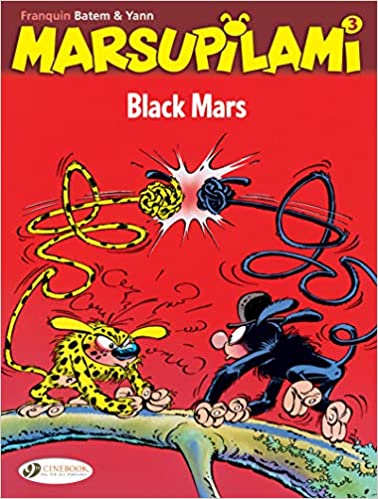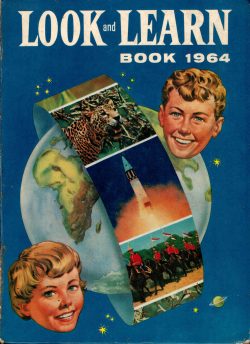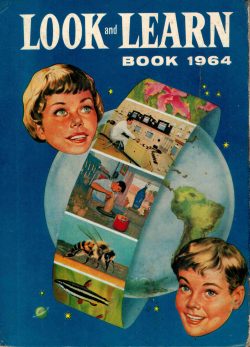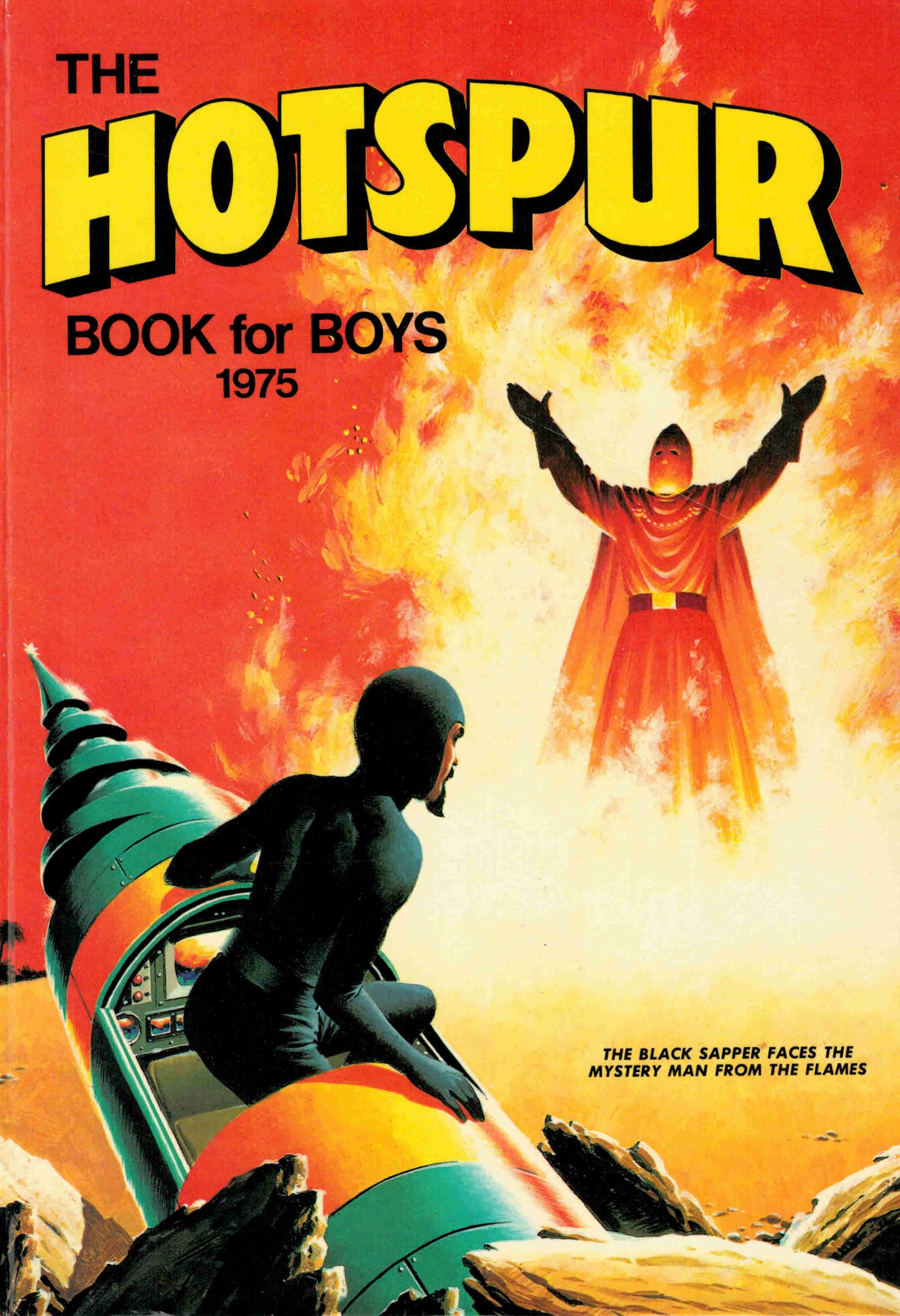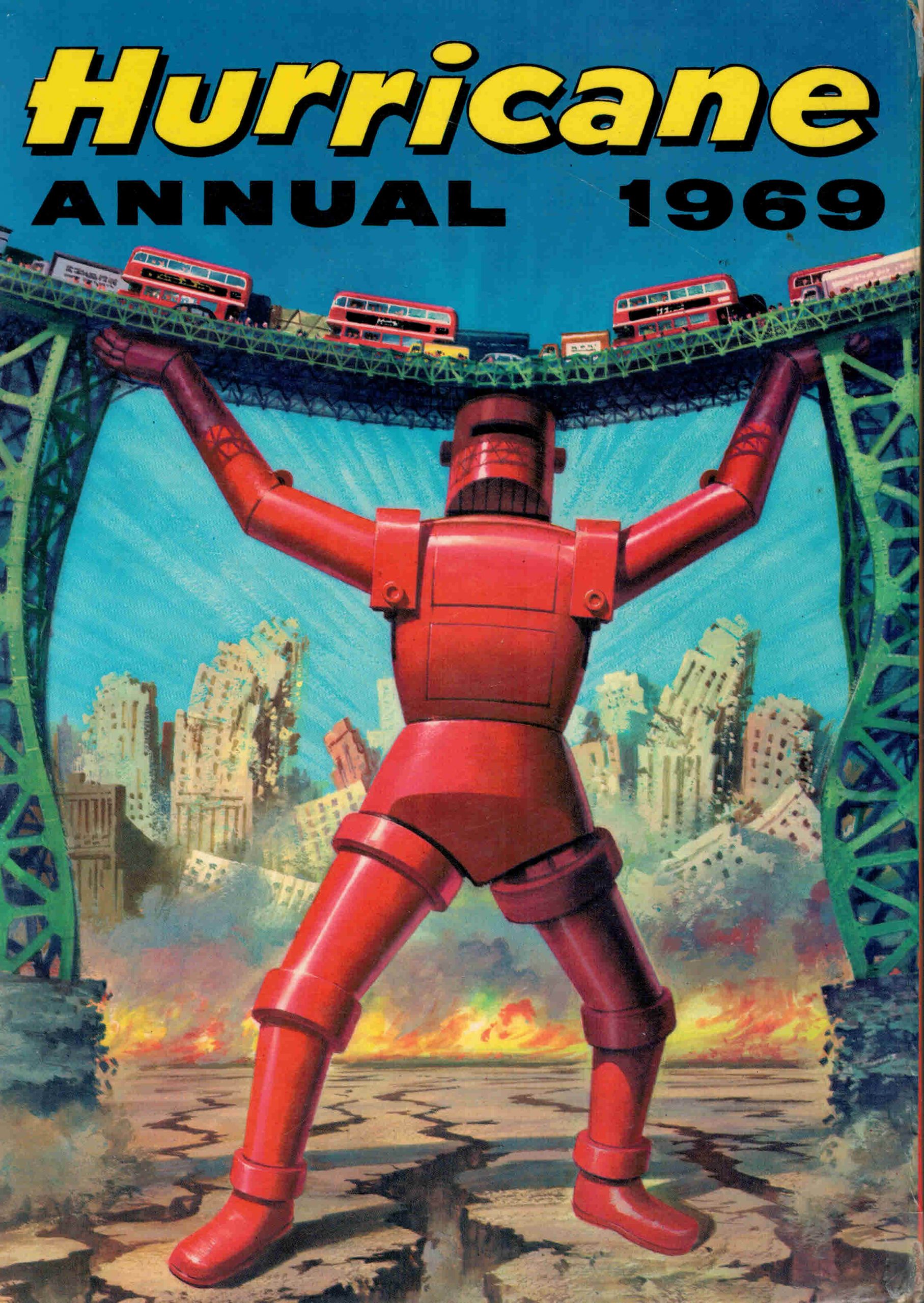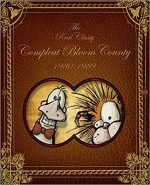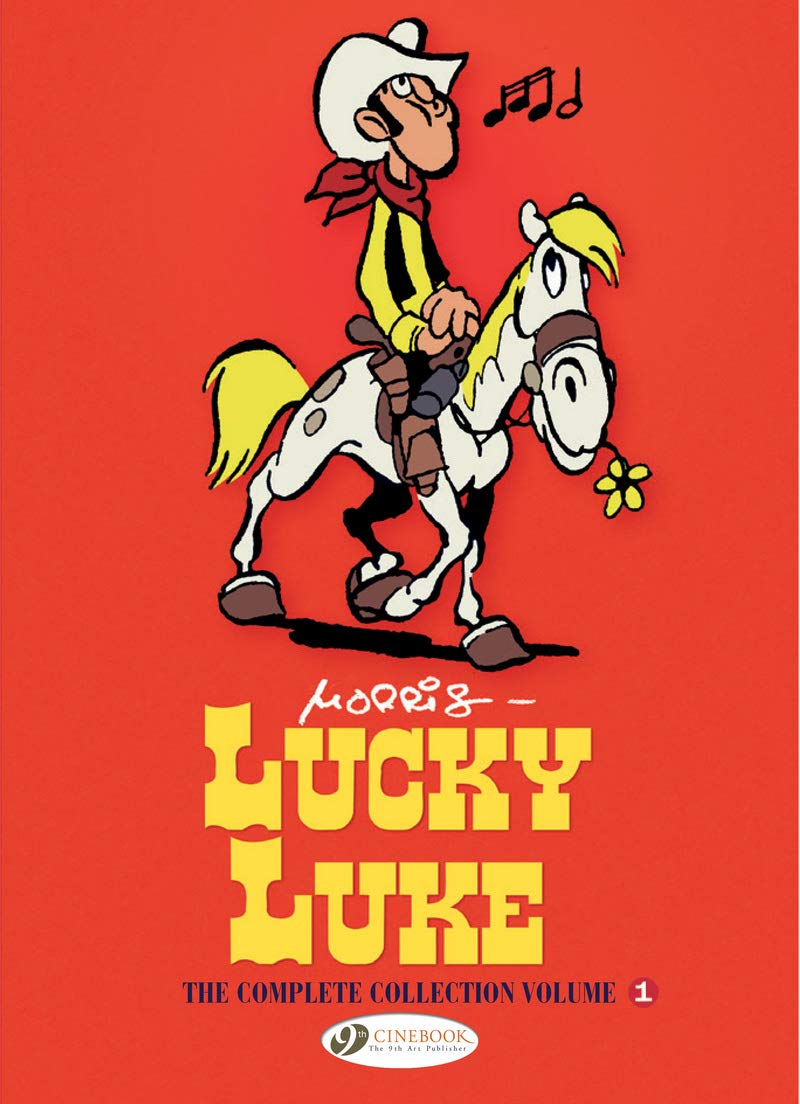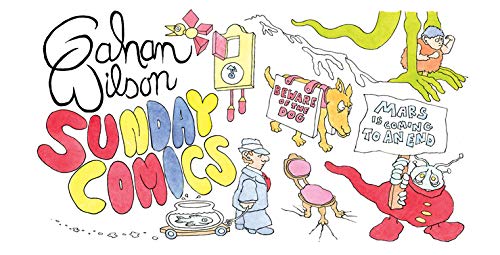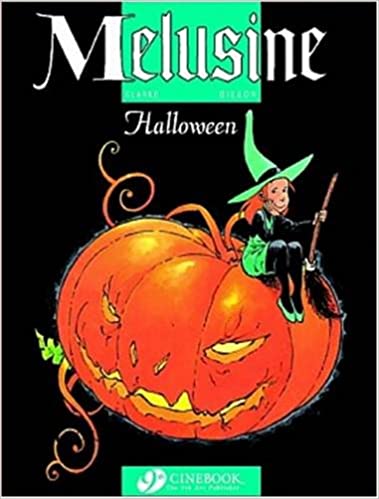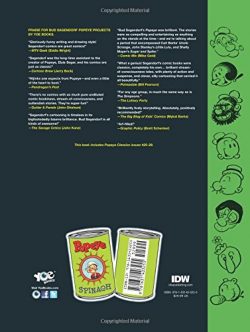
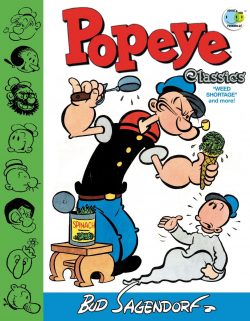
By Bud Sagendorf, edited and designed by Craig Yoe (Yoe Books/IDW)
ISBN: 978-1631403255 (HB) eISBN: 978-1-62302-786-5
How many cartoon classics can you think of still going after a century? Here’s one…
There are a few fictional personages to enter communal world consciousness – and fewer still from comics – but a grizzled, bluff, uneducated, visually impaired old sailor with a speech impediment is possibly the most well-known of that select bunch.
Elzie Crisler Segar was born in Chester, Illinois on 8th December 1894. His father was a general handyman, and the boy’s early life was filled with the kinds of solid, dependable blue-collar jobs that typified his generation of cartoonists. He worked as a decorator, house-painter and also played drums; accompanying vaudeville acts at the local theatre.
When the town got a movie-house, he played for the silent films, absorbing all the staging, timing and narrative tricks from keen observation of the screen. Those lessons would become his greatest assets as a cartoonist. It was while working as the film projectionist, at age 18, that he decided to become a cartoonist and tell his own stories.
Like so many others in those hard times, he studied art via mail, in this case W.L. Evans’ cartooning correspondence course out of Cleveland, Ohio, before gravitating to Chicago where he was “discovered†by Richard F. Outcault – regarded by most in the know today as the inventor of modern newspaper comic strips with The Yellow Kid and Buster Brown.
The celebrated pioneer introduced Segar around at the prestigious Chicago Herald. Still wet behind the ears, the kid’s first strip, Charley Chaplin’s Comedy Capers, debuted on 12th March 1916.
In 1918, Segar married Myrtle Johnson and moved to William Randolph Hearst’s Chicago Evening American to create Looping the Loop, but Managing Editor William Curley saw a big future for Segar and packed the newlyweds off to New York, HQ of the mighty King Features Syndicate.
Within a year Segar was producing Thimble Theatre, which launched December 19th 1919 in the New York Journal. It was a smart pastiche of cinema and knock-off of movie-inspired features like Hairbreadth Harry and Midget Movies, with a repertory of stock players to act out comedies, melodramas, comedies, crime-stories, chases and especially comedies for vast daily audiences. It didn’t stay that way for long…
The core cartoon cast included parental pillars Nana and Cole Oyl; their lanky, highly-strung daughter Olive, diminutive-but-pushy son Castor and the homely ingenue’s plain and (very) simple occasional boyfriend Horace Hamgravy (latterly, just Ham Gravy).
Segar had been successfully, steadily producing Thimble Theatre for a decade when he introduced a brusque, vulgar “sailor man†into the daily ongoing saga of hapless halfwits on January 17th 1929. Nobody suspected the giddy heights that stubborn cantankerous walk-on would reach…
Many Happy Returns, you old matelot, you…
In 1924 Segar created a second daily strip The 5:15: a surreal domestic comedy featuring weedy commuter and would-be inventor John Sappo and his formidable wife Myrtle. This one endured – in one form or another – as a topper/footer-feature accompanying the main Sunday page throughout the author’s career. The feature even survived his untimely death, eventually becoming the trainee-playground of Popeye’s second great humour stylist: Bud Sagendorf.
After Segar’s far-too-premature death in 1938, Doc Winner, Tom Sims, Ralph Stein and Bela Zambouly all worked on the strip, even as the Fleischer Studio’s animated features brought Popeye to the entire world, albeit a slightly different vision of the old salt of the funny pages. Sadly, none of them had the eccentric flair and raw inventiveness that had put Thimble Theatre at the forefront of cartoon entertainments. But then, finally, Bud arrived…
Born in 1915, Forrest “Bud†Sagendorf was barely 17 when his sister – who worked in the Santa Monica art store where Segar bought his drawing supplies – introduced the kid to the master cartoonist who became his teacher and employer as well as a father-figure. In 1958, after years on the periphery, Sagendorf finally took over the strip and all the merchandise design, becoming Popeye’s prime originator…
When Sagendorf became the main man, his loose, rangy style and breezy scripts brought the strip itself back to the forefront of popularity and made reading it cool and fun all over again. Bud wrote and drew Popeye in every graphic arena for 24 years and when he died in 1994, he was succeeded by controversial “Underground†cartoonist Bobby London.
Young Bud had been Segar’s assistant and apprentice, and from 1948 onwards was exclusive writer and illustrator of Popeye’s comicbook adventures. These launched in February of that year in a regular monthly title published by America’s unassailable king of periodical licensing, Dell Comics.
When Popeye first appeared, he was a rude, crude brawler: a gambling, cheating, uncivilised ne’er-do-well. He was soon exposed as the ultimate working-class hero: raw and rough-hewn, practical, but with an innate, unshakable sense of what’s fair and what’s not; a joker who wanted kids to be themselves – but not necessarily “good†– and someone who took no guff from anyone…
Naturally, as his popularity grew, Popeye mellowed somewhat. He was still ready to defend the weak and had absolutely no pretensions or aspirations to rise above his fellows, but the shocking sense of dangerous unpredictability and comedic anarchy he initially provided was sorely missed… but not in Sagendorf’s comicbook yarns…
Collected in their entirety in this beguiling full-colour hardback (also available in digital editions) are issues #25-29 of Popeye‘s comic book series, produced by the irrepressible Sagendorf and collectively spanning July-September 1953 to July-September 1954.
The stunning, nigh stream-of-consciousness slapstick sagas are preceded by an effusively appreciative ‘Society of Sagendorks’ mission statement by inspired aficionado, historian and publisher Craig Yoe, offering a mirthful mission statement after which the regular collation of ephemera and a merchandise dubbed the ‘Bud Sagendorf Scrapbook’ shares cover art domestic and foreign; themed key-rings, art from Segar Russell (Broom-Hilda) Myers and excerpts from Bud’s Artists Cartoon Course (1960). Also included are ghosted Thimble Theatre strips he did during the Tom Sim/Bela Zaboly era, commissioned cast sketches and assorted trivia such as packaging for the Popeye Funny Face Maker and a TV syndication ad.
We rejoin the ceaseless parade of laughs, surreal imagination and thrills with #25 which opens and closes with a prose yarn adorning both inside front and back covers. ‘Bread Time!’ reveals how a cow named Harriet deals with her unlikely passion for baked goods before the comic capers commence with ‘Shrink Weed!’ as some “wild spinach†reduces the old salt and baby Swee’Pea to the size of insects with potentially dire and outrageous consequences…
Sagendorf was a smart guy in tune with popular trends and fashions as well as understanding how kids’ minds worked. His tales are timeless in approach and delivery. In the era of rapid television expansion, cowboys were King, with westerns dominating both large and small screens as well as plenty of comics. Thus, many sagas featured Popeye as a horse-riding sagebrush wanderer who ran a desert railroad when he wasn’t prospecting…
‘Live Game’ finds infant Swee’Pea contending with a little Indian boy and his pet bear before teaming up to play a prank on the adults after which back-up feature Sherm features another bright spark youngster. Here the kid succumbs to the juvenile blandishments of the girl next door in ‘Ah Love!’
Issue #26 opens and closes with text tale ‘Cat Fish’ as an inner-city moggy imaginatively satisfies a yearning for fresh fodder, whilst ‘Popeye and the Gang’ face an invasion of ‘Spookers!’ intent of avenging themselves on senior reprobate Poopdeck Pappy after which ‘Popeye and Swee’Pea in “Kid Raising!!‒ finds Popeye and Olive using book learning to counter Swee’Pea’s pester power.
Following the trend for sci fi fun, new feature ‘Axle and Cam on the Planet Meco’ introduces a robotic father and son in a wild romp featuring a spare-parts scavenging rogue called the Black Mechanic…
Popeye #27 (January-March 1954) starts with a prose parable about a blacksmith’s cat discovering a new toy in ‘Space Ball!’ before the entire cartoon cast visit ‘The Happy Little Island’ and confront subsurface creatures doing their darndest to spoil that jolly atmosphere.
Popeye and Swee’Pea then clash as the little nipper tries boosting his strength with a spinach overdose in ‘Full Power!’, before Axle and Cam on the Planet Meco! sees the clever kid construct a junk yard dog from junk yard junk…
In #28 ‘Fowl! Fowl!’ offers a text yarn about an alley cat promising a slap-up feed for his pals before ‘Popeye and Swee’Pea! in “Moneybag! Or Buddy, Can You Spare a Nugget?‒ sees old moocher Wimpy bamboozle himself when he sees Swee’Pea playing with Popeye’s bullion bags…
An engaging Micawber-like coward, cad and conman, the insatiably ravenous J. Wellington Wimpy debuted in the newspaper strip on May 3rd 1931 as an unnamed and decidedly partisan referee in one of Popeye’s pugilistic bouts. The scurrilous yet scrupulously polite oaf struck a chord and Segar gradually made him a fixture. Always hungry, keen to solicit bribes and a cunning coiner of many immortal catchphrases – such as “I would gladly pay you Tuesday for a hamburger today†and “Let’s you and him fight†– Wimpy is the perfect foil for a simple action hero who increasingly stole the entire show… and anything else unless it was extremely well nailed down…
He’s no match for the kid, though…
Calamity strikes courtesy of the sinister Sea Hag next as ‘“Weed Shortage†or “Pass the Spinach!‒ finds the sailor man scuppered by a global spinach blight. Captured by his frightful foe, the weakened water warrior needs the motivation of Wimpy and sweety-pie Olive to save his own bacon…
Axle and Cam on the Planet Meco then clash as the junior robot starts copying human kids and their bizarre games, and dad tries to set him straight…
Closing the comic capers for now, Popeye #29 (July-September 1954) opens with prose poser ‘Nine for Nine’ wherein Garry the Cat plays fast and loose with his stockpile of spare lives. Popeye then excels in another epic confrontation with the Sea Hag, who unleashes magical menace ‘The Boo-Bird!’ in the certainty that the old salt has no defence. Yet again, the villain underestimates Olive and the restorative power of spinach…
When Popeye refuses to give his kid a dime, Swee’Pea consults Wimpy and crafts a brilliant get-rich quick scheme in ‘Pay Dirt!’ after which ‘Axle and Cam!’ sees dad swept off his feet by the boy’s latest fun invention…
Outrageous and side-splitting, these all-ages yarns are evergreen examples of surreal narrative cartooning at its most inspirational. Over the last nine decades Thimble Theatre‘s most successful son has unfailingly delighted readers and viewers around the world. This book is simply one of many, but definitely top-tier entertainment for all those who love lunacy, laughter, frantic fantasy and rollicking adventure. If that’s you, add this compendium of wonder to your collection.
Popeye Classics volume 6 © 2015 Gussoni-Yoe Studio, Inc. All Rights Reserved. Popeye © 2015 King Features Syndicate. ™ Heart Holdings Inc.

